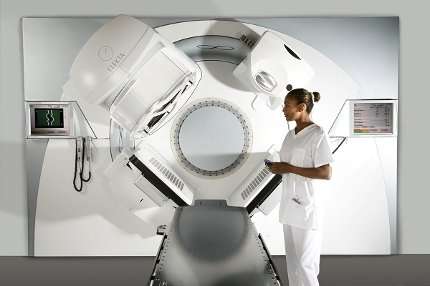- Home
- Editorial
- News
- Practice Guidelines
- Anesthesiology Guidelines
- Cancer Guidelines
- Cardiac Sciences Guidelines
- Critical Care Guidelines
- Dentistry Guidelines
- Dermatology Guidelines
- Diabetes and Endo Guidelines
- Diagnostics Guidelines
- ENT Guidelines
- Featured Practice Guidelines
- Gastroenterology Guidelines
- Geriatrics Guidelines
- Medicine Guidelines
- Nephrology Guidelines
- Neurosciences Guidelines
- Obs and Gynae Guidelines
- Ophthalmology Guidelines
- Orthopaedics Guidelines
- Paediatrics Guidelines
- Psychiatry Guidelines
- Pulmonology Guidelines
- Radiology Guidelines
- Surgery Guidelines
- Urology Guidelines
Concussion effects persist beyond one year after athletes resume play, MRI findings confirm

Among athletes with concussion, the effects of the injury on brain physiology may persist when they return to play and 1 year later, Magnetic resonance imaging studies have indicated in a new research. The study has found that an athlete's brain may still not be fully recovered one year after being allowed to return to play. The study has been published in Neurology, the medical journal of the American Academy of Neurology.
The long-term effects of concussion in the brain also depended on the severity of an athlete's symptoms and how long it took an athlete to return to play. The study did not capture Magnetic resonance imaging changes between the return to play and 1 year later. In addition, Magnetic resonance imaging changes might be influenced by a lack of training before resuming play, as well as by exertion and subconcussive impacts after returning to play, the authors noted.
The researchers wanted to find out how long does it take an athlete to recover from a concussion.They conducted the study that involved 24 college athletes with concussion and 122 without concussion. In the study, men and women were equally represented in both groups and the participants competed in the following sports: volleyball, hockey, soccer, football, rugby, basketball, lacrosse and water polo.
They used magnetic resonance imaging (MRI) to scan the brains of the athletes. For athletes with concussion, the first scan was performed an average of four days after injury. The second scan occurred when the athlete was cleared to return to play. The third scan was performed one year after return to play. Athletes who did not have concussion also had one brain scan at the start of their seasons. Brain scans of the concussed athletes were then compared to the brain scans of the healthy athletes.
It was found that the brain scans of concussed athletes still showed signs of brain injury when they were allowed to return to play, but in addition, they found evidence of brain injury an entire year after return to play.
When compared to healthy athletes, those who returned to play after concussion had significantly reduced blood flow in the brain one year later. Specifically, concussed athletes had an average decrease in blood flow of 10 milliliters per 100 grams of blood per minute compared to healthy athletes. When examining brain scans that map how water molecules move in the white matter of the brain, researchers also found the brains of concussed athletes still showed possible signs of tissue swelling one year after return to play.
However, it is important to note that researchers also found that measurements of brain connectivity had returned to normal one year after return to play. This included measurements of both the patterns of resting brain activity in the brain's grey matter and measurements of the lines of communication in the brain's white matter.
"The principal finding of this study was that different aspects of brain physiology have different patterns of long-term recovery," said Dr Churchill. "These findings significantly enhance our understanding of the natural course of brain recovery after a concussion. Future studies are needed to look beyond one year after return to play to see if these longer-term brain injuries eventually heal or remain permanent."
A limitation of the study was that athletes with concussion had brain scans only after their injury and not before the injury, although each athlete was carefully matched to a group of uninjured athletes, based on age, sex and previous history of concussion.
SOURCE: Churchill NW et al. Neurology. 2019 Oct 16. DOI: https://doi.org/10.1212/WNL.0000000000008523
Provided by American Academy of Neurology

Disclaimer: This site is primarily intended for healthcare professionals. Any content/information on this website does not replace the advice of medical and/or health professionals and should not be construed as medical/diagnostic advice/endorsement or prescription. Use of this site is subject to our terms of use, privacy policy, advertisement policy. © 2020 Minerva Medical Treatment Pvt Ltd